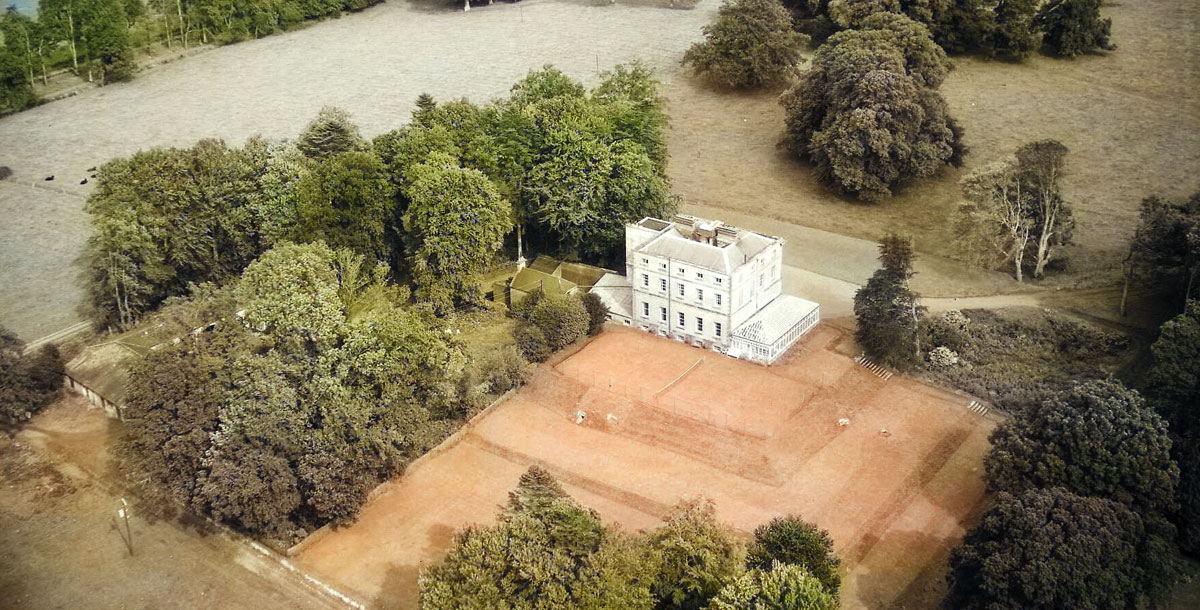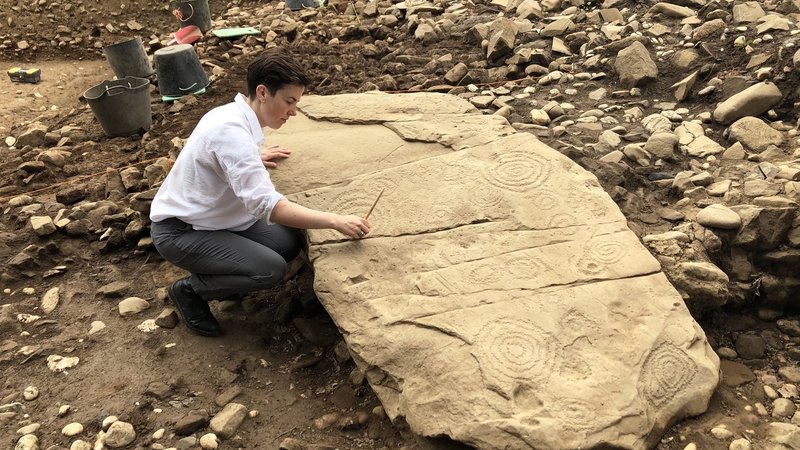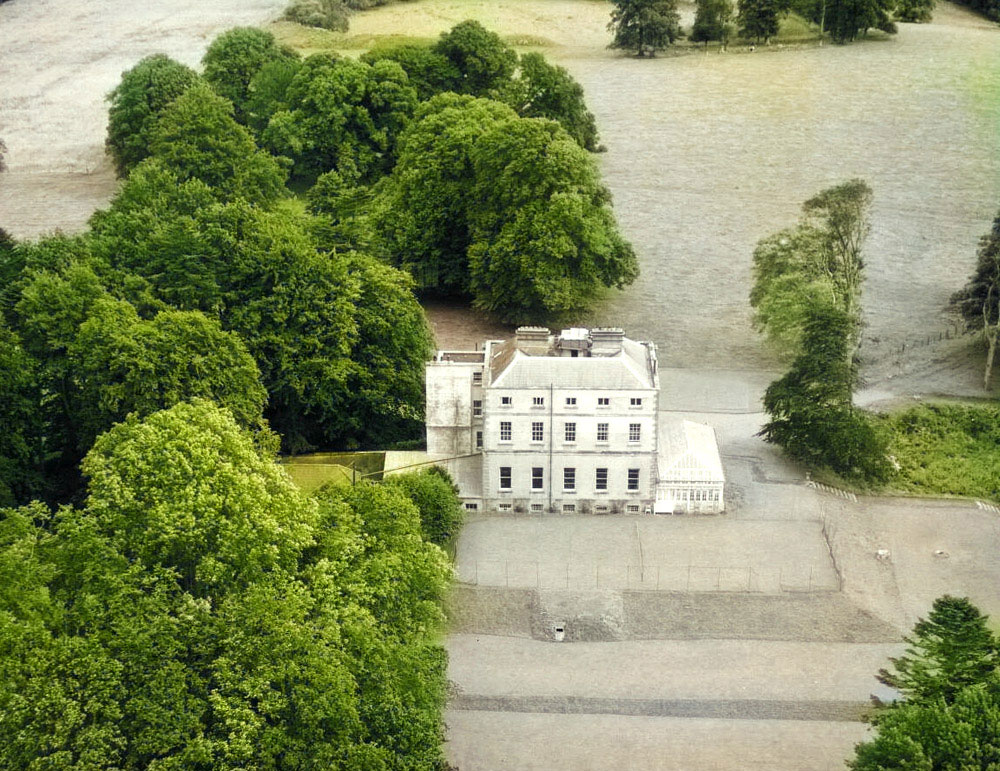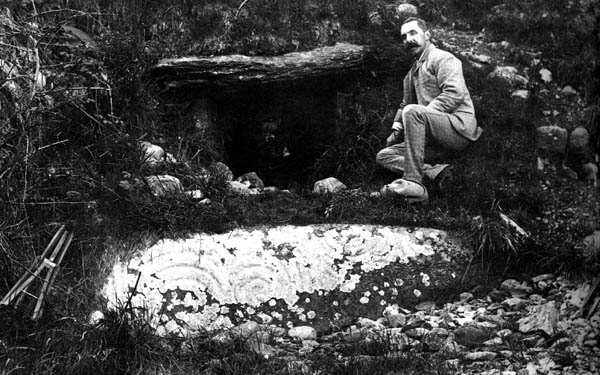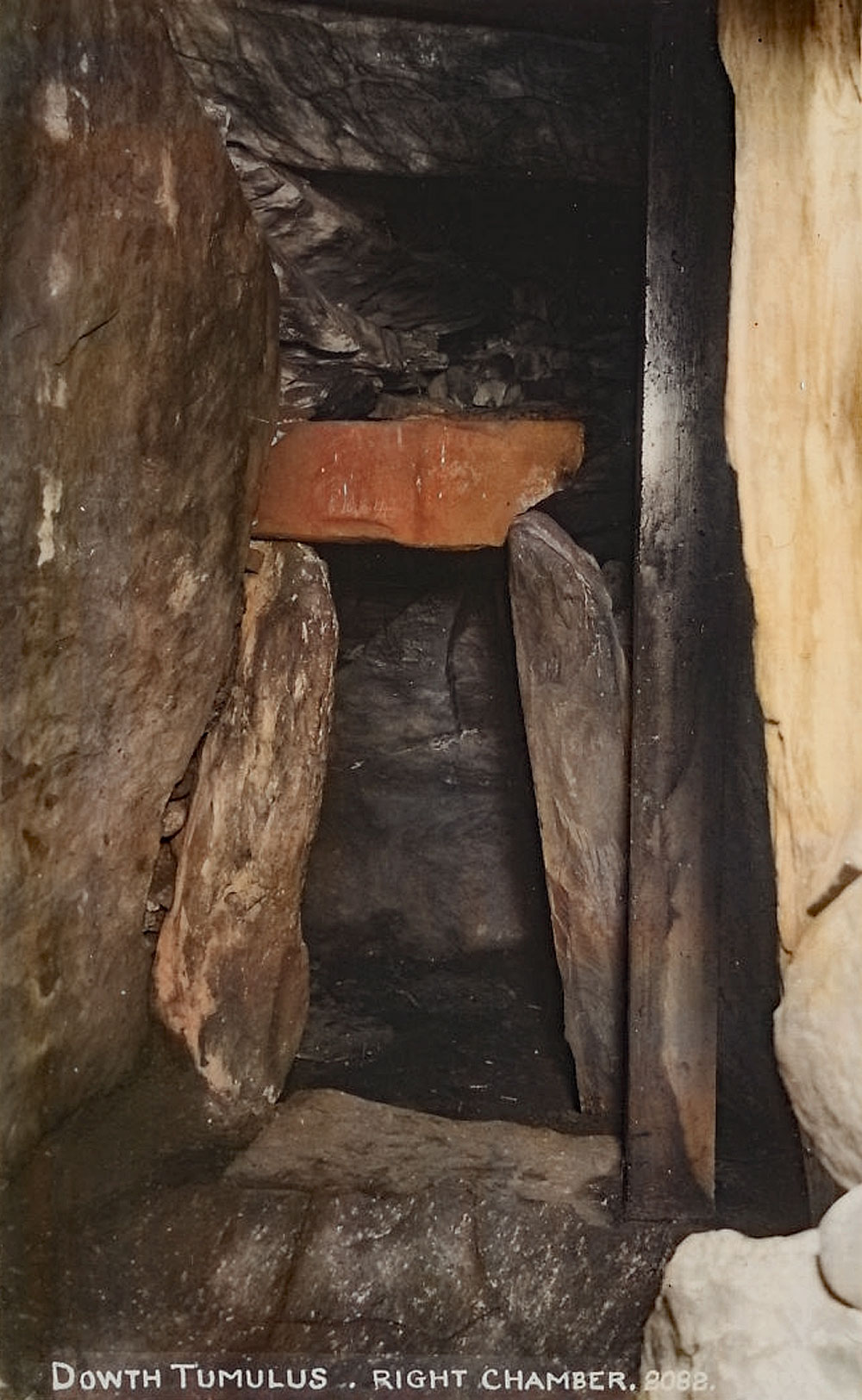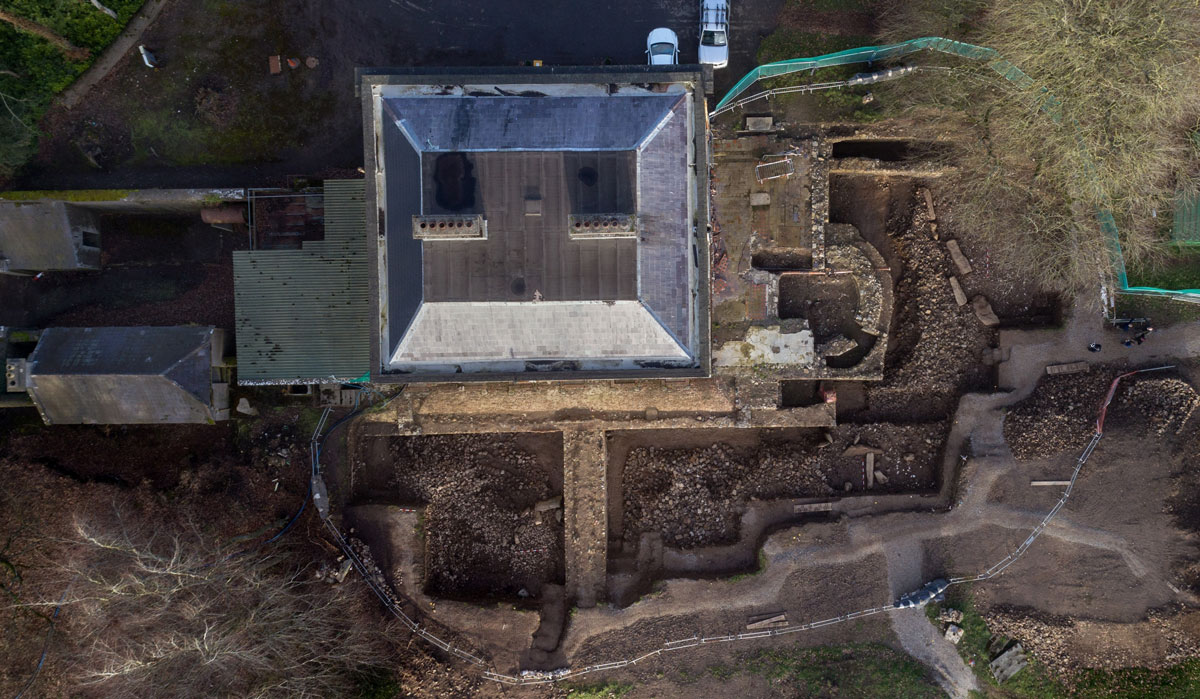The Hill of Sin: Excavations at Dowth Hall
The large house at Dowth Hall was built by the old Norman Gaelic family, the Nettervilles, around 1760.
The manor of Dowth is first recorded as in the possession of Ralph de Picheford in 1234 and an inquiry in 1253 described the manor as five ploughlands with a garden and dovecote on a demesne of 132 acres. The manor had passed to the Netterville family by the end of the thirteenth century, and they retained it down to the nineteenth. In 1409 Luke Netterville was confirmed in the possession of Dowth. In 1622 Nicholas was raised to the peerage as the first Viscount Netterville.
Dowth Passage Tomb with Cliodhna Ní Lionáin.
The discovery of a passage tomb at Dowth Co. Meath has been described by archaeologists as "the find of a lifetime" is within the Brú na Bóinne World Heritage Site.
It was made during an excavation carried out by the agri-technology company Devenish in partnership with University College Dublin School of Archaeology. Dr. Clíodhna Ní Lionáin was the Lead Archaeologist on the project.
Following removal of the 18th-century building rubble layers, two megalithic chambers — a small, stalled chamber (Tomb 1: 0.75 meters north-west/south-east x 1.7 meters) in Area 1 and a larger chamber (Tomb 2: 4.5 meters west-south-west/east-north-east x 6.6 meters) in Area 2 — and part of a perimeter kerb (six kerbstones) were identified. A difference in cairn structure was noted between the areas, with large river-rolled cobbles predominating in Area 1, while in Areas 2 and 3 the cairn material is comprised solely of large angular stones. A capping layer of small, rounded quartz pebbles was present in Area 3. A number of features (two possible stone settings, a linear ditch) were also found in front of the mound, to the south of the kerb.
Dowth Hall, Dowth, Meath. Source.
The Google earth image, top, shows the immediate landscape around the Boyne Valley. The small river, the Mattock, is not shown, but it runs along to the north of the sites and enters the Boyne just east of Dowth, enclosing the monumental landscape by water on three sides. This layout is similar to the Coolrea peninsula in County Sligo.
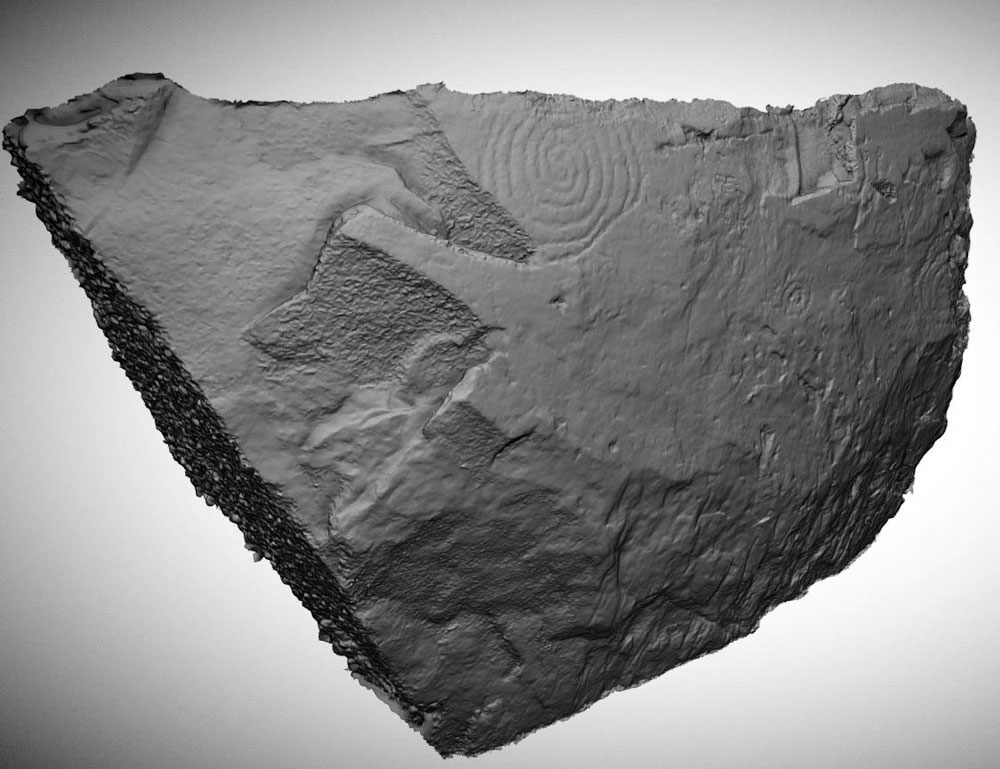
As at the other great megalithic complexes of Carrowmore in Coolrea, Carrowkeel and Loughcrew, the monuments in the Boyne Valley are completely interlinked and interconnected. Indeed Michael Poynder, in his book Pi in the Sky, suggests that the Boyne Valley is connected to the other Irish sites by a great leyline crossing the country. The monuments comprise an extensive sacred ritual and astronomicaly oriented complex; there are many wonderful myths and stories about the mounds, said to be the mansions of notable members of the Tuatha De Danann Dagda, Aengus Og and Lugh.
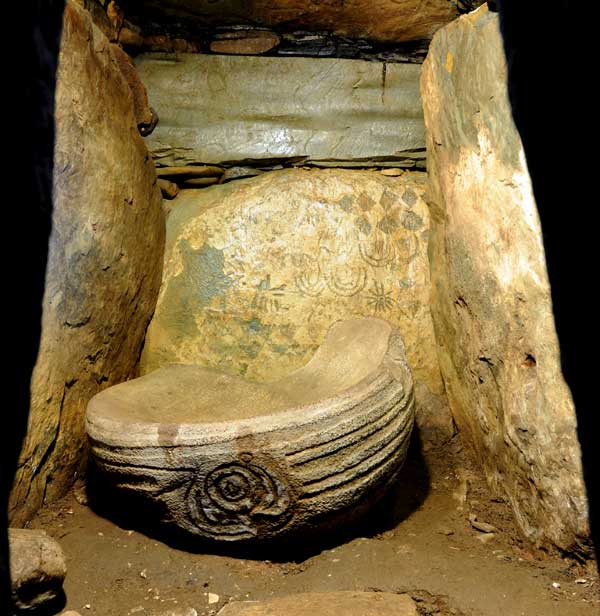
For example, standing on Site B, the unopened mound within a henge below Newgrange, a viewer can watch the midsummer sunsets and the midwinter lunar standstills setting between Sites K and L and Newgrange. The large timber circle built later in the neolithic may have been used in the same way to view lunar settings.
The three large mounds are intervisible, and indeed the buried north chamber at Dowth is aligned to Newgrange, and the Samhain/Imbolc sunsets set directly over the great mound. Each of the three cairns are around 90 meters in diameter and up to 12 meters high, and each contains some 300,000 tons of mound material All three had flat, circular platforms on their summits, ideal for viewing the horizons, and would have looked like Queen Maeve's cairn on Knocknarea in County Sligo in 3,200 BC. Newgrange was 'restored' in the 1970's and probably looked quite different when built.
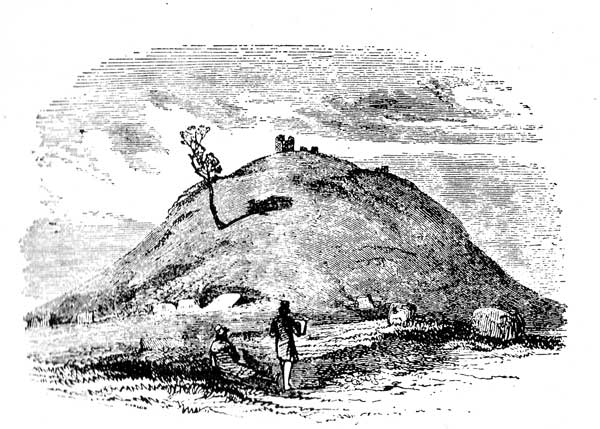
Some of the building materials for the mounds were transported by boat - the nearest source for the quartz so strikingly used to face Newgrange is the Wicklow Mountains, 50 km to the south. Granite cobbles were collected from beaches 30 km to the north of the Boyne's mouth near the Cooley peninsula. The greywackie kerbstones and orthostats - several hunderds of them - are thought to have come from 8 km to the northeast of the Boyne Valley.
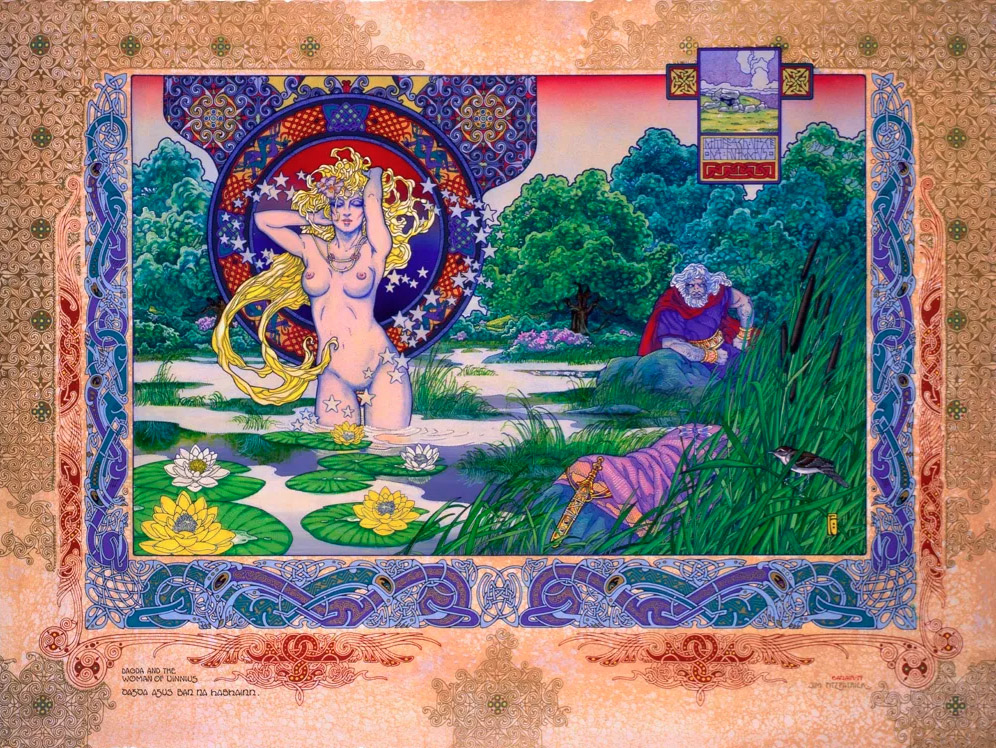
There are reasons why Dowth Hall has survived almost unaltered since first built 250 years ago. The sixth Viscount Netterville, somewhat eccentric, fell into dispute with the local priest and was banned from the chapel on his own land; in retaliation, he built a ‘tea house’ on top of the Neolithic tomb from which he claimed to follow religious services through a telescope. But then he seems to have given up living at Dowth and moved back to Dublin. He never married and on dying at the age of 82 left a will with no less than nine codicils. One of these insisted that the Dowth estate go to whoever inherited the title, but it took eight years and a lot of litigation for the rightful heir, a distant cousin, to establish his claim. He did so at considerable cost and so, despite marrying an heiress, was obliged to offer Dowth for sale; the last Lord Netterville, another remote cousin, died also without heirs in 1882 and the title became extinct.
Netterville! Netterville! Where Have You Been? Source.
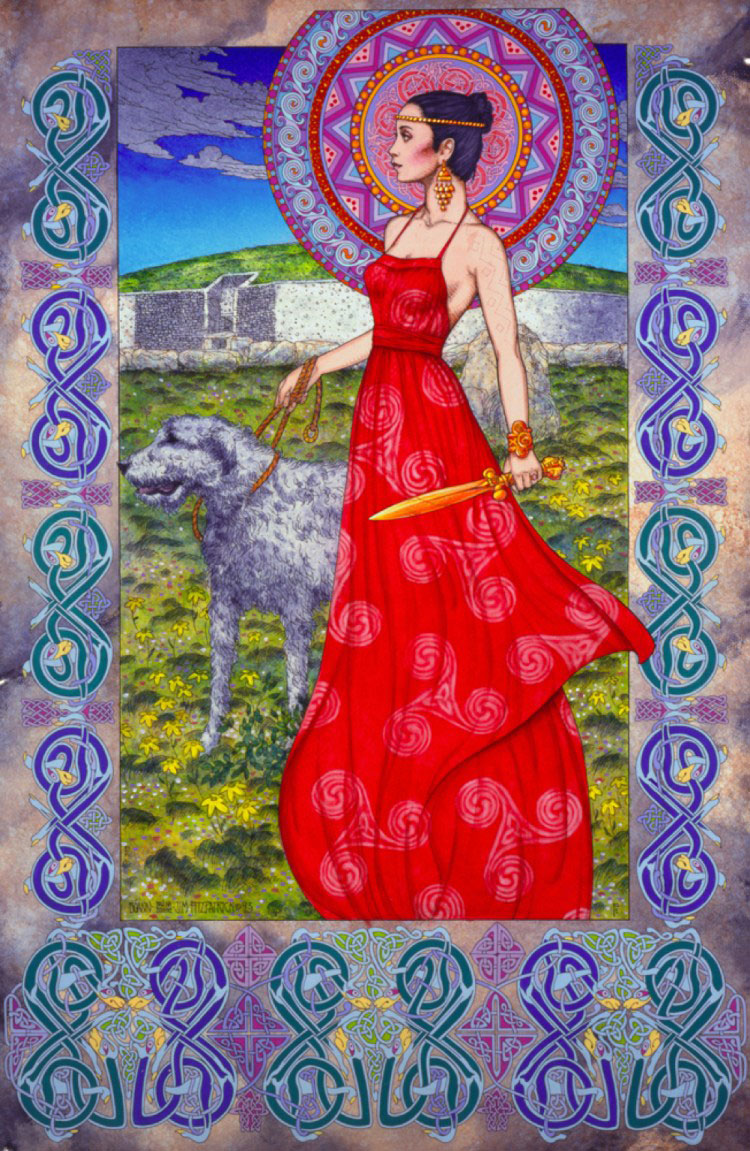
Meanwhile Dowth was finally bought from the Chancery Court in 1850 by Richard Gradwell, younger son of a wealthy Catholic family from Lancashire. His heirs continued to live in the house for a century, but then sold up in the early 1950s when the place changed hands again. It did so one more time around twenty years later when acquired by two local bachelor farmers who moved into Dowth Hall. Following their respective deaths (the second at the start of last year), a local newspaper reported that the siblings had gone ‘to Drogheda every Saturday night, would attend the Fatima novena at 7.30pm then would walk over West Street to see what was going on, although they never took a drink or went to pubs.’
Now Dowth Hall is for sale, and there must be concern that it finds a sympathetic new owner because the house is in need of serious attention. It comes with some 420 acres of agricultural land, which means a sale is assured but that could be to the building’s disadvantage: it might fall into further desuetude if the farm alone was of interest to a purchaser. Too many instances of this have occurred in the past and it must not be allowed to happen here. One feels there ought to be some kind of vetting process to ensure prospective buyers demonstrate sufficient appreciation of the house. Only somebody with the same vision and flair as the sixth Lord Netterville should be permitted to acquire Dowth Hall.
Netterville! Netterville! Where Have You Been? Source.

